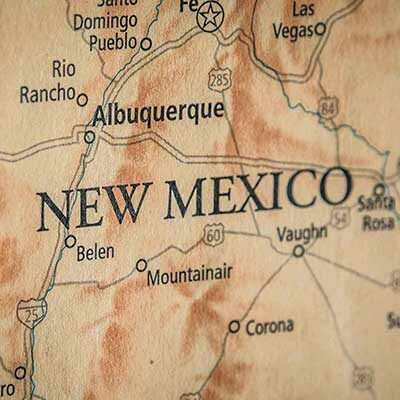PFAS Videos
NM asks military to 'come in line ' with the Biden administration
NM Ag Secretary on PFAS
Former Air Force Firefighter Kevin Ferrara Talks PFAS Contamination
Rep. Teresa Leger Fernandez on Congressional PFAS Efforts
Reporters on the Challenges of Covering PFAS
The Struggle for PFAS Accountability
NMED Secretary James Kenney on PFAS
Air Force's Christipher Gierke on 'pump and treat' plan
Senator Ben Ray Luján Talks PFAS in New Mexico
Senator Martin Heinrich Talks PFAS in New Mexico
Cannon Air Force Base Officials - PFAS Update
Art Schaap’s Dairy Dilemma
Why Care About PFAS Contamination?
2020 has had its fair share of challenges, including the COVID-19 pandemic, economic insecurity and political unrest. So, why should New Mexicans care about the PFAS groundwater contamination near a handful of military installations across the state?
What are PFAS?
Human-made per- and polyfluoroalkyl substances are found in lots of common items. Their carbon-fluorine bonds make them useful, but also dangerous. What are PFAS and how do they harm humans?
PFAS at Holloman Air Force Base
In November 2018, the Air Force notified the New Mexico Environment Department that tests conducted in late 2017 showed the presence of PFAS, or per- and polyfluoroalkyl substances, in surface and ground water at the base. Samples at Holloman were as high as 1,294,000 parts per trillion, whereas the human health advisory—for a lifetime drinking water exposure to PFAS—is 70 parts per trillion. The state issued a Notice of Violation against the military and called for cleanup, but the U.S. Department of Defense sued the state.
Eastern New Mexico's PFAS Problem
In August 2018, the Air Force revealed there were PFAS in the soils and waters below Cannon Air Force Base. More than two years later, dairy farmers like Art Schaap are still waiting for relief, the drinking water utility in Clovis has shut down drinking water wells, and the military and the state of New Mexico are locked in legal battle over cleanup. Meanwhile, New Mexicans are footing the bill for more water studies to learn where the toxic chemicals are and how they're moving. And as groundwater levels continue to drop—due to decades of overpumping of the Ogallala Aquifer—the federal government is building a pipeline to bring more water to the region from the Canadian River and Ute Lake.
The Military's Legacy in New Mexico
Below Cannon and Holloman Air Force bases, waters are contaminated with toxic PFAS, which the state of New Mexico has tried to compel the military to map and clean. The Pentagon is also studying the possibility of PFAS contamination at Fort Wingate, the Army National Guard armories in Rio Rancho and Roswell, the Army Aviation Support Facility in Santa Fe, and White Sands Missile Range. While these toxic chemicals themselves might be considered new, issues of pollution, accountability, and transparency aren’t novel to the many New Mexico communities still facing the environmental and health consequences of uranium mining, nuclear weapons testing, and other types of pollution from military and weapons-related activities.
PFAS Testing Results in New Mexico
In cooperation with the New Mexico Environment Department, the U.S. Geological Survey tested groundwater and surface water in 16 counties to find where PFAS are present and which specific types of those toxic substances have found their way into the state’s waters. The tests did not reveal alarmingly high levels of the pollutants at any one site. But the presence of PFAS was widespread geographically, including in the Gila, San Juan, Pecos, Canadian, and Animas rivers, as well as the Rio Grande and the Rio Puerco. Given their toxicity—as well as the fact that they persist within waters, soils, and bodies “forever”—the results are notable. Ahead of the study's release, we spoke with Rebecca Roose, director of the Water Protection Division at NMED about the study.
Ask Us Anything - PFAS Contamination in New Mexico
Groundwater War Correspondent Laura Paskus talks to state officials about the ongoing groundwater contamination caused by PFAS chemicals tied to military installations across New Mexico.
Tom Udall Talks PFAS Contamination
Former New Mexico Senator Tom Udall (D) has been a champion of the environment for decades. He ended his long and storied career in Washington D.C. just a few days ago, but he spent some time with correspondent Laura Paskus recently to offer some insight and advice regarding the evolving story of groundwater contamination near at least 7 military installations across the state. This interview is part of @NMPBS's special investigation "Groundwater Wars."
Rep. Deb Haaland Talks PFAS Contamination
Representative Deb Haaland (CD1) has been nominated by President-Elect Joe Biden to head up the Department of the Interior under his administration. Until that nomination is confirmed, Haaland is still the sitting Congresswoman for New Mexico's First Congressional District. In both her current role and potential future role, she says protecting the environment will be a top priority. Rep. Haaland took a few minutes recently to talk with correspondent Laura Paskus about the evolving story of groundwater contamination near at least 7 military installations across the state. This interview is part of @NMPBS's special investigation "Groundwater Wars."






